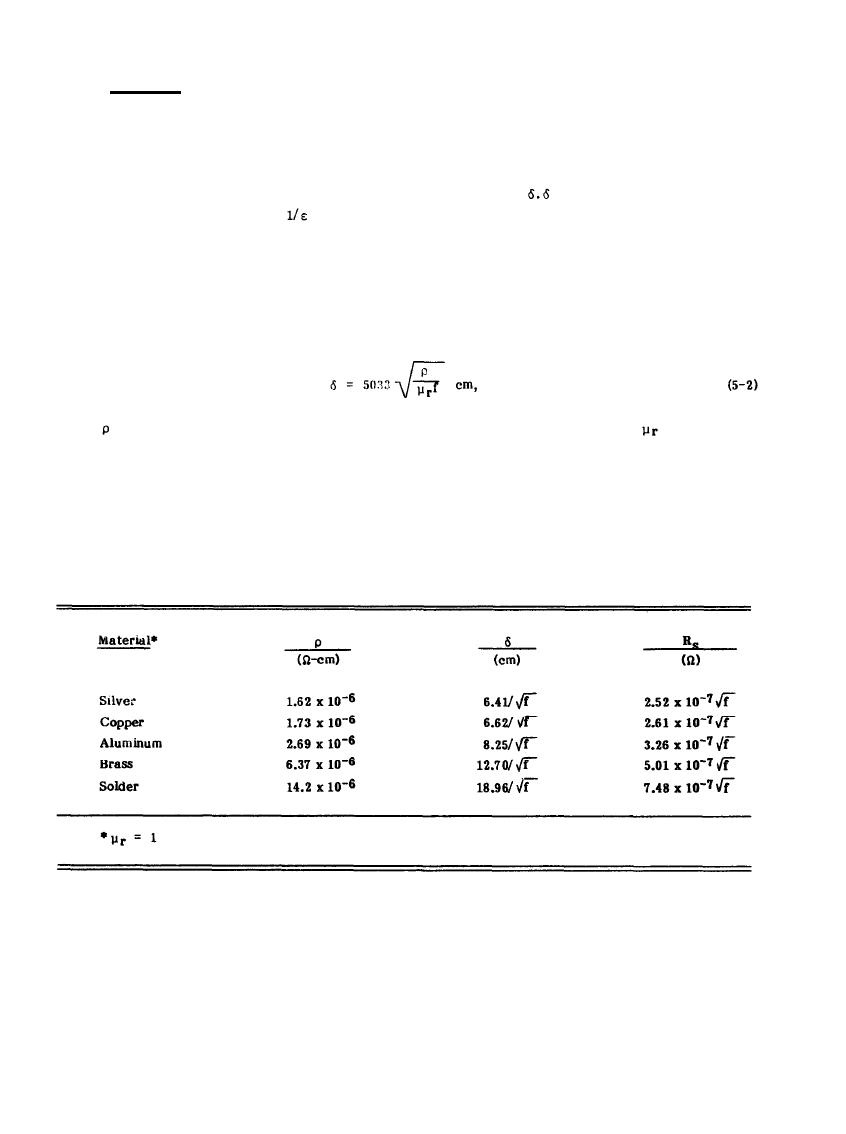

Custom Search
|
|

|
||
 MIL-HDBK-419A
5.2.2.1 Skin Effect.
Whereas a direct current is uniformly distributed over the cross-sectional area of a conductor, alternating
current tends to concentrate near the surface of the conductor. The higher the frequency, the greater the
concentration near the surface. This physical phenomenon is called skin effect. A measure of the degree of
penetration of the currents into the conductor is given by the skin depth,
is defined as the depth at which
the current density is attenuated to
= 1/2.718 = 0.37 of its value at the conductor surface. Skin depth may
also be interpreted as the equivalent thickness of a hollow conductor carrying a uniform distribution over its
crosssectional area, having the same external shape as the actual conductor, and having a dc resistance exactly
the same as the ac resistance of the conductor.
For conductors whose thickness is at least three times the skin depth, this depth is given by (5-3).
where
is the resistivity of the material in ohm-cm, f is the frequency in hertz, and
is the relative
permeability of the material. The skin depth for various metals is given in Table 5-2 and Figure 5-1. Note that
copper has a skin depth of 0.34 inch (8.63 mm) at 60 Hz but only .00026 inch (0.066 mm) at 1 MHz.
Table 5-2
Parameters of Conductor Materials (5-4)
5-3
|
 |
|
 |
||